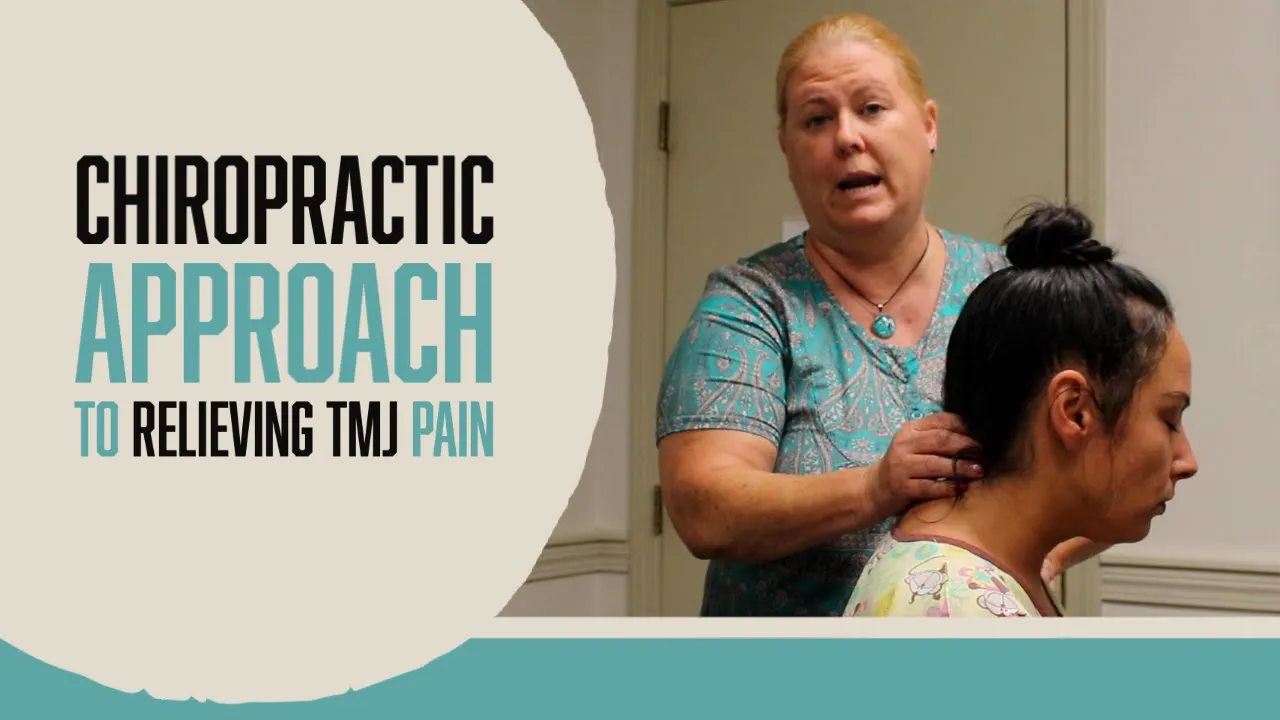
Chiropractic Approach to Relieving TMJ Pain | Chiropractor for TMJ in Fairhaven, MA
I’m Dr. Susie and today we’re going to talk about the TMJ or temporomandibular joint, we have one on each side, right in here, and right in here. Your jaw joints are kind of like a bucket handle, it has kondiles that open and close and go side to side. People complain of TMJ dysfunction, that can start in a bunch of different ways. The first cause is people tend to chew on one side. So you’re working on one side and the other side doesn’t work and it kind of makes the bucket handle a little crooked.
Another reason is for TMJ pain is trauma. So you’re out there playing softball or baseball and you get like a baseball for the face, it’s going to hit your jaw and knock it out a line. And the additional problem that promotes TMJ dysfunction is really, really bad posture. Turn to the side this way. When you have a forward head posture like this, it puts a lot of stress on the joints here, across the top of the shoulder and into the neck. And oftentimes people get TMJ problems.
Sometimes dental work when you have your mouth open and then working in your mouth that can create a TMJ imbalance.
A lot of times when people aren’t gum chewers, it’s more the tight muscles inside the mouth and outside. The TMJ muscles are up here in the temple in the jaw here. And if you open the mouth, their way back inside here, I don’t stick my finger in there. But to give some people really good stretches to stretch all that musculature. Oftentimes though, because the TMJ is a very sensitive joint, there’s a lot of nerve endings inside. Oftentimes, the TMJ joint is the last joint i that just with a chiropractic manipulation.
Let me explain why. Oftentimes, when you go ahead and you adjust the neck up, and here, it changed the pressure on the job. Your first word was here, your TMJ is right in here. So the very, very close in proximity. And it this muscle spasm up in this area and affects the jaw. So when I go ahead and adjust the top vertebra up in here, it takes a lot of pressure off the jaw. A lot of the rehab exercises I give are geared towards getting the posture better and getting the shoulders down and back, the chin back down actually puts your TMJ your jaw in a optimal place to work, I actually have a patient that when she sits in her normal posture, her job pops and clicks. But when she picks a posture back, it’s not popping and clicking. So to adjust the joint, it’s a very, very simple adjustment right here, very minute amount of motion, just a really quick type of adjustment, you might get a little pop sound and oftentimes, somebody who’s having TMJ problems, it’ll resolve very, very quickly.
Another thing that we tend to do is with people will have a mouthpiece because they brush or bite down at night. That creates a lot of tightness in the muscles in in the jaw. So people tend to have a lot of headaches without TMJ can give you a ton of headaches, it can give you neck pain, it can give you ringing in ears because the muscles are all close. It can give you shoulder pain, it’s usually that type of scenario. When somebody comes in and complains of a TMJ problem. You’ll notice a TMJ problem because when they open their mouth, their jaw is crooked, it does open wide, it kind of deviates, sometimes opens and just goes to one side, sometimes it goes opens and creates a little “s” shape when you try to open it. It’s because either there’s a problem with a capsule or the disc inside or the muscles are out of balance.
So chiro-practically speaking just to reiterate, will give stretching exercises will evaluate the neck and the shoulder and the upper back will evaluate the musculature and the function of the jaw. We can adjust the jaw, we can definitely adjust the neck. We give a lot of rehab exercises, there are a lot of fun. One of my favorite exercises to have the patient open their mouth as wide as they can push your tongue out all the way that is fun to do, especially when you’re in a mixed crowd. But it stretches all the muscles inside the mouth. That’s one exercise. And like I said we geared towards getting proper posture as well.
Thank you very much for watching. And that’s the TMJ dysfunction and the methods we use for relieving TMJ pain.

